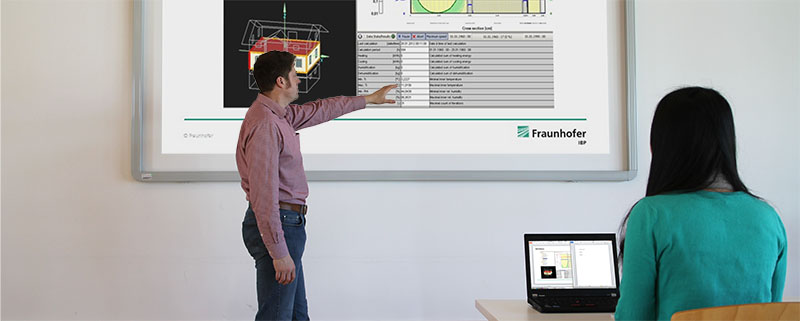
In addition to accounting for the thermal response of buildings and building components it is necessary to also understand the moisture conditions and the effects of humidity. Long-term exposure to high moisture conditions can cause damage in building components, and significant health problems result from mold growth on surfaces that are exposed to high moisture conditions.
The thermal and moisture conditions and transport in buildings and building components are coupled. It is well known that high moisture levels result in higher heat losses, and the temperature conditions in building components influence the moisture transport. Analysis of the coupling of heat and moisture is known as “hygrothermics.”
The past method: Glaser
The traditional method for assessing the moisture balance of a building component has been the Glaser method (described in the DIN 4108 standard) which analyzes the vapor diffusion transport in the component. However, this method does not account for the capillary transport of moisture and for the sorption capacity of the component, both of which reduce the risk of damage in case of condensation. Furthermore, since the Glaser method only considers steady-state transport under simplified steady-state boundary conditions, it cannot reproduce individual short-term events or allow for rain and solar radiation. It was meant to provide a general assessment of the hygrothermal suitability of a component, not to produce a simulation of realistic heat and moisture conditions in a component exposed to the weather prevailing at its individual location.
The current, state-of-the-art method: WUFI®
The Department of Hygrothermics at Fraunhofer IBP has developed the WUFI® software family for state-of-the-art hygrothermic analysis. WUFI® performs dynamic simulations of coupled heat and moisture transfer. The methods have been validated world wide and provide realistic simulation of hygrothermal conditions in building components and buildings under actual climate conditions.
WUFI® is based on the latest knowledge in vapor diffusion and liquid transport in building materials. Nonetheless, the WUFI® software requires only standard material properties and easy-to-determine moisture storage and liquid transport functions. For boundary conditions, measured outdoor climates – including driving rain and solar radiation – are used. Various types of models thus allow the analysis of multi-layer materials, component connections, and even multi-zone buildings under realistic exposure to natural weather conditions.

The WUFI® software family:
The WUFI® software family includes four main programs for different applications. There are free versions and additional components available that enable more detailed analysis and/or additional results.
Users and Uses:
WUFI® is used by construction materials manufacturers, consultants, designers, and experts in the field of hygrothermics. Depending on the application, one of the following programs is used:
Last Update: June 6, 2025 at 11:05



